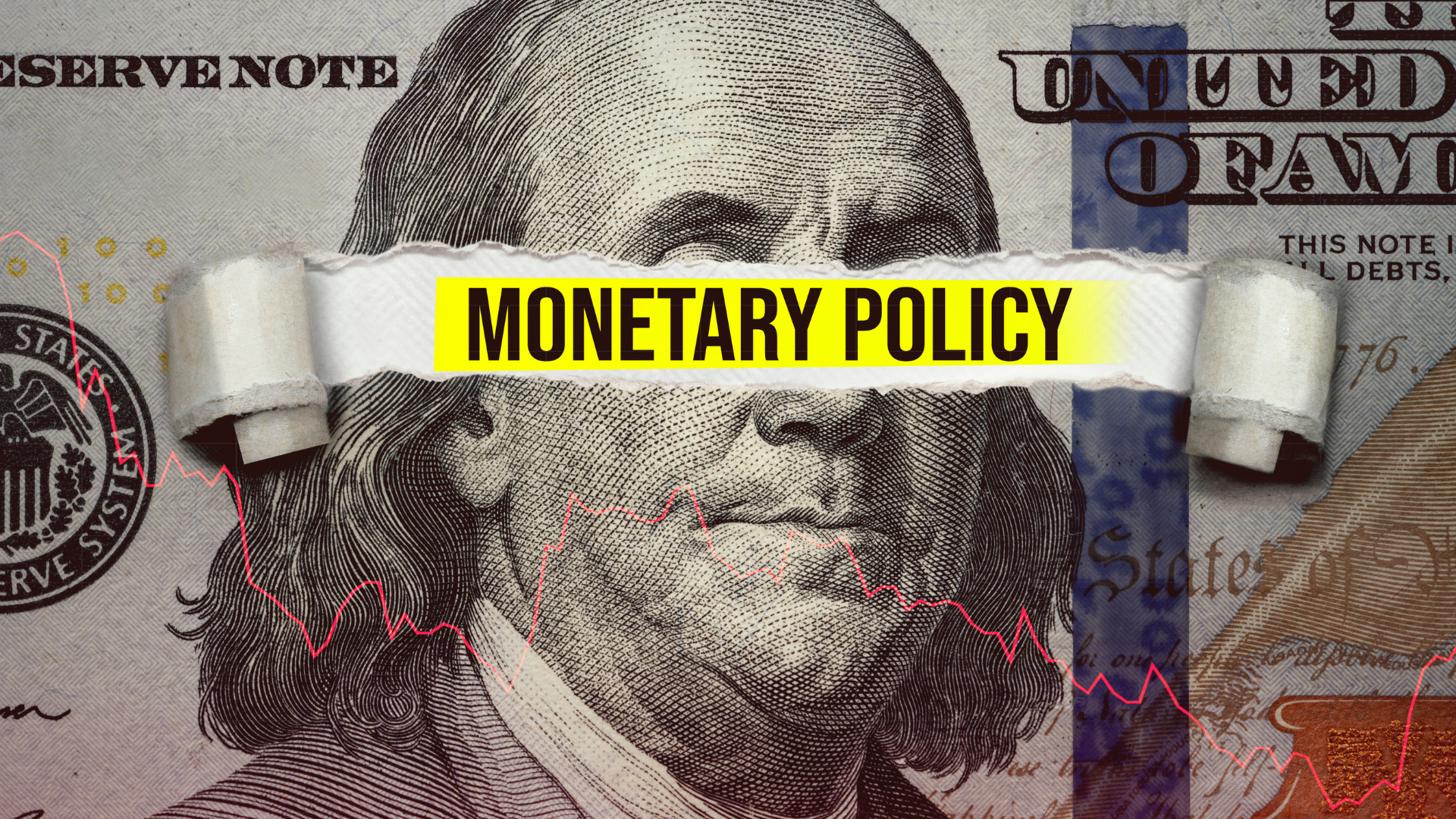Understanding about the Central Bank
⭐️ គន្លឹះសំខាន់
– ធនាគារកណ្តាលគឺជាគ្រឹះស្ថានហិរញ្ញវត្ថុដែលដើរតួនាទីយ៉ាងសំខាន់ក្នុងសេដ្ឋកិច្ចរបស់ប្រទេសមួយ។
– ធនាគារកណ្តាលត្រូវបានគេហៅថាជា “អ្នកផ្តល់ប្រាក់កម្ចីចុងក្រោយ”។
– គោលដៅចម្បងរបស់ធនាគារកណ្តាល។
– គោលនយោបាយរូបិយវត្ថុ។
– ឥទ្ធិពលនៃធនាគារកណ្តាលទៅលើសេដ្ឋកិច្ច។
⭐️ ឈ្វេងយល់ពីធនាគារកណ្តាល
ធនាគារកណ្តាលគឺជាគ្រឹះស្ថានហិរញ្ញវត្ថុដែលដើរតួនាទីយ៉ាងសំខាន់ក្នុងសេដ្ឋកិច្ចរបស់ប្រទេសមួយ ដោយត្រួតពិនិត្យ និងអនុវត្តគោលនយោបាយរូបិយវត្ថុ, បោះពុម្ពរូបិយប័ណ្ណ, គ្រប់គ្រង និងត្រួតពិនិត្យស្ថាប័នហិរញ្ញវត្ថុ, និងរក្សាស្ថិរភាព និងសុចរិតភាពនៅក្នុងប្រព័ន្ធហិរញ្ញវត្ថុជាតិ។
⭐️ តើធនាគារកណ្តាលមានតួនាទីធ្វើអ្វីខ្លះ?
ធនាគារកណ្តាលត្រូវបានគេហៅថាជា “អ្នកផ្តល់ប្រាក់កម្ចីចុងក្រោយ” ដែលមានន័យថា ធនាគារកណ្តាលជាអ្នកទទួលខុសត្រូវក្នុងការផ្តល់មូលនិធិដល់សេដ្ឋកិច្ចរបស់ប្រទេសខ្លួននៅពេលដែលធនាគារពាណិជ្ជមិនអាចផ្គត់ផ្គង់មូលនិធិក្នុងពេលមានការខ្វះខាត។ ម្យ៉ាងវិញទៀត ធនាគារកណ្តាលមានតួនាទីក្នុងការទប់ស្កាត់ការខូចខាតផ្សេងៗដែលអាចកើតមានឡើងនៅក្នុងប្រព័ន្ធធនាគារ។
⭐️ គោលដៅចម្បងរបស់ធនាគារកណ្តាល
គោលដៅចម្បងរបស់ធនាគារកណ្តាលមានដូចជា៖
– ផ្តល់ជូននូវស្ថិរភាពនៃតម្លៃរបស់រូបិយប័ណ្ណដោយគ្រប់គ្រងសម្ពាធអតិផរណា។
– ដើរតួជាអាជ្ញាធររូបិយវត្ថុរបស់ប្រទេសមួយ ដែលមានសិទ្ធិផ្ដាច់មុខក្នុងការបោះផ្សាយរូបិយវត្ថុជាតិ។
– ធនាគារកណ្តាលអាចដំណើរការបានយ៉ាងល្អបំផុត លុះត្រាតែមានការរក្សាឯករាជ្យភាពពីគោលនយោបាយសារពើពន្ធរបស់រដ្ឋាភិបាល។
– ធនាគារជាតិធ្វើការវិភាគស្ថានភាពសេដ្ឋកិច្ចនិងរូបិយវត្ថុជាប្រចាំ ចេញផ្សាយ របាយការណ៍និងព្រឹត្តបត្រផ្សេងៗ ត្រួតពិនិត្យប្រព័ន្ធទូទាត់ជាតិ ដំឡើងតារាងស្ថិតិជញ្ជីងទូទាត់ និងចូលរួមក្នុងការគ្រប់គ្រង បំណុល និងឥណទេយ្យក្រៅប្រទេសផងដែរ ។
⭐️ មុខងាររបស់ធនាគារកណ្តាល
ធនាគារកណ្តាលមានមុខងារសំខាន់ៗចំនួនប្រាំបីគឺ៖
– ជាអ្នកផ្តល់ប្រាក់កម្ចីចុងក្រោយ
– ជាអ្នករក្សាសាច់ប្រាក់បម្រុង
– ជាអ្នកគ្រប់គ្រងឥណទាន
– ជាអ្នកការពារផលប្រយោជន៍របស់អ្នកដាក់ប្រាក់បញ្ញើ
– ជាអាជ្ញាធររូបិយវត្ថុ
– ជាអ្នករក្សាស្ថិរភាពប្រព័ន្ធរូបិយប័ណ្ណអន្តរជាតិ
– ជាធនាគារិក ភ្នាក់ងារសារពើពន្ធ និងទីប្រឹក្សារដ្ឋាភិបាល
– ជាសភាផាត់ទាត់ និងផ្ទេរប្រាក់។

⭐️ គោលនយោបាយរូបិយវត្ថុ
– និយមន័យ៖ គោលនយោបាយរូបិយវត្ថុ សំដៅលើសំណុំនៃសកម្មភាព និងយុទ្ធសាស្ត្រដែលធនាគារកណ្តាលរបស់ប្រទេសមួយ (ឬអាជ្ញាធររូបិយវត្ថុពាក់ព័ន្ធផ្សេងទៀត) ប្រើប្រាស់ដើម្បីគ្រប់គ្រងការផ្គត់ផ្គង់ប្រាក់ និងឥណទាននៅក្នុងសេដ្ឋកិច្ច។ គោលដៅចម្បងនៃគោលនយោបាយរូបិយវត្ថុគឺដើម្បីសម្រេចបាននូវគោលដៅសេដ្ឋកិច្ចជាក់លាក់ ដូចជាស្ថិរភាពតម្លៃ អត្រាគ្មានការងារធ្វើទាប និងកំណើនសេដ្ឋកិច្ចប្រកបដោយចីរភាព។
– គោលបំណងនៃគោលនយោបាយរូបិយវត្ថុ៖
○ អតិផរណា៖ គោលនយោបាយរូបិយវត្ថុអាចកំណត់គោលដៅអតិផរណា។ បើអតិផរណាមានកម្រិតទាប នោះត្រូវបានគេចាត់ទុកថាសេដ្ឋកិច្ចមានសុខភាពល្អ។ ប៉ុន្តែប្រសិនបើអតិផរណាមានកម្រិតខ្ពស់ នោះធនាគារកណ្តាលនឹងប្រើប្រាស់គោលនយោបាយបង្រួម (Contractionary Policy) កាត់បន្ថយការផ្គត់ផ្គង់រូបិយវត្ថុ ដើម្បីទប់ទល់នឹងអតិផរណា។
○ អត្រាគ្មានការងារធ្វើ៖ គោលនយោបាយរូបិយវត្ថុអាចមានឥទ្ធិពលលើកម្រិតនៃភាពអត់ការងារធ្វើនៅក្នុងសេដ្ឋកិច្ចបាន។ ជាឧទាហរណ៍ គោលនយោបាយពង្រីក (Expansionary Policy) បង្កើនការផ្គត់ផ្គង់សរុបនៃរូបិយវត្ថុនៅក្នុងសេដ្ឋកិច្ច ដើម្បីទប់ទល់នឹងភាពគ្មានការងារធ្វើនៅក្នុងពេលមានវិបត្តិ ដែលជួយជម្រុញឱ្យមានការពង្រីកនៅក្នុងទីផ្សារការងារ។
○ អត្រាប្តូរប្រាក់៖ ធនាគារកណ្តាលប្រើប្រាស់គោលនយោបាយសារពើពន្ធដើម្បីគ្រប់គ្រងអត្រាប្តូរប្រាក់រវាងរូបិយប័ណ្ណក្នុងស្រុក និងរូបិយប័ណ្ណបរទេស។ ជាឧទាហរណ៍ ធនាគារកណ្តាលអាចបង្កើនការផ្គត់ផ្គង់ប្រាក់ដោយការចេញរូបិយប័ណ្ណបន្ថែមទៀត។ ក្នុងករណីបែបនេះ រូបិយប័ណ្ណក្នុងស្រុកមានតម្លៃថោកធៀបនឹងសមភាគីបរទេស ជាហេតុទើបធនាគារកណ្តាលប្រើប្រាស់គោលនយោបាយសារពើពន្ធដើម្បីគ្រប់គ្រងអត្រាប្តូរប្រាក់។
ប្រសិនបើសេដ្ឋកិច្ចកំពុងតែជួបវិបត្តិ ឬជួបប្រទះនឹងកំណើនយឺត នោះធនាគារកណ្តាលអាចប្រើប្រាស់ ការបន្ធូរបន្ថយគោលនយោបាយរូបិយវត្ថុ (Quantitative Easing) ដើម្បីជំរុញឱ្យមានការខ្ចីប្រាក់ និងការចំណាយច្រើន។ ផ្ទុយទៅវិញ ប្រសិនបើអតិផរណាឡើងខ្ពស់ ឬសេដ្ឋកិច្ចកើនឡើងខ្លាំង នោះធនាគារកណ្តាលអាចរឹតបន្តឹងគោលនយោបាយរូបិយវត្ថុ (Quantitative Tightening) ដើម្បីការពារអតិផរណាកុំឱ្យកើនឡើងខ្ពស់ពេក។

⭐️ តើធនាគារកណ្តាលមានឥទ្ធិពលទៅលើសេដ្ឋកិច្ចយ៉ាងដូចម្តេច?
ធនាគារកណ្តាលអាចនិយាយបានថាមានមុខងារសំខាន់ពីរយ៉ាង៖ (ក) ការគ្រប់គ្រងអតិផរណា និងស្ថិរភាពតម្លៃនៅក្នុងលក្ខខណ្ឌម៉ាក្រូសេដ្ឋកិច្ច និង (ខ) អ្នកផ្តល់ប្រាក់កម្ចីចុងក្រោយនៅក្នុងលក្ខខណ្ឌមីក្រូសេដ្ឋកិច្ច។
ក. ឥទ្ធិពលរបស់ម៉ាក្រូសេដ្ឋកិច្ច
– ធនាគារកណ្តាលធានាស្ថិរភាពតម្លៃតាមរយៈគោលនយោបាយរូបិយវត្ថុ និងការគ្រប់គ្រងអតិផរណាដោយការគ្រប់គ្រងការផ្គត់ផ្គង់ប្រាក់។
– សកម្មភាពរបស់ធនាគារកណ្តាលអាចប៉ះពាល់ដល់សន្ទស្សន៍អារម្មណ៍ទីផ្សារ ហើយត្រូវបានប្រតិបត្តិតាមរយៈប្រតិបត្តិការទីផ្សារបើកចំហ (Open Market Operations / OMO) ។
– OMO បញ្ចូលសាច់ប្រាក់ងាយស្រួល (Liquidity) ឬប្រមូលមូលនិធិ ដែលប៉ះពាល់ដល់កម្រិតអតិផរណាដោយផ្ទាល់។
– ដើម្បីកាត់បន្ថយថ្លៃដើមកម្ចី ធនាគារកណ្តាលទិញមូលបត្ររបស់រដ្ឋាភិបាល ដែលអាចនាំឱ្យមានអតិផរណា។
– ដើម្បីកាត់បន្ថយអតិផរណា ធនាគារកណ្តាលលក់មូលបត្រ ដោយដំឡើងអត្រាការប្រាក់ ដើម្បីបង្អាក់ការខ្ចីប្រាក់។
ខ. ឥទ្ធិពលរបស់មីក្រូសេដ្ឋកិច្ច
– ធនាគារកណ្តាលត្រូវបានបង្កើតឡើងជាអ្នកផ្តល់ប្រាក់កម្ចីចុងក្រោយដើម្បីធានាស្ថិរភាព។
– ធនាគារពាណិជ្ជផ្តល់ប្រាក់កម្ចីតាមមូលដ្ឋានមុនគេ (First-come, First-serve basis)។
– ប្រសិនបើធនាគារមួយខ្វះសាច់ប្រាក់ងាយស្រួល (Liquidity) ដើម្បីបំពេញតម្រូវការ នោះអាចខ្ចីពីធនាគារកណ្តាលបាន។
– ធនាគារកណ្តាលរក្សាទុនបម្រុងរបស់ធនាគារពាណិជ្ជដោយផ្អែកលើសមាមាត្រប្រាក់បញ្ញើ (Deposit ratios)។
| English Version |
⭐️ Key takeaway
– A central bank is a financial institution that plays a crucial role in a country’s economy.
– A central bank has been described as the “lender of last resort”.
– Primary goals of central bank.
– Monetary policy
– The effects of the central bank on the economy.
⭐️ Understanding about the Central Bank
A central bank is a financial institution that plays a crucial role in a country’s economy by overseeing and implementing monetary policy, issuing currency, regulating and supervising financial institutions, and maintaining the stability and integrity of the national financial system.
⭐️ What central banks do?
A central bank has been described as the “lender of last resort”, which means it is responsible for providing its nation’s economy with funds when commercial banks cannot cover a supply shortage. In other words, the central bank prevents the country’s banking system from failing.
⭐️ Primary goals of the central bank
Primary goals of central bank:
– To provide their countries’ currencies with price stability by controlling inflation.
– Act as the regulatory authority of a country’s monetary policy and is the sole provider and partner of notes and coins in circulation.
– Central bank can best function in these capacities by remaining independent from government fiscal policy
– Central bank conducts regular economic and monetary analysis, publishes various publications, oversees the nation’s payment systems, establishes the balance of payments, and participates in the management of external debt and claims.
⭐️ Functions of the central bank
There are eight main functions of the Central Bank which are:
– Lends the last resort
– Custodian of cash reserve
– Controls credit
– Protecting the depositor’s interests
– Currency regulator
– Custodian of international currency
– Banker, Fiscal agent and adviser to the government
– Clearing house for transfer and settlement

⭐️ Monetary policy
– Definition: Monetary policy refers to the set of actions and strategies that a country’s central bank (or other relevant monetary authority) uses to control and manage the supply of money and credit within the economy. The primary goal of monetary policy is to achieve specific economic objectives, such as price stability, full employment, and sustainable economic growth.
– Objectives:
○ Inflation: Monetary policies can target inflation levels. A low level of inflation is considered to be healthy for the economy. If inflation is high, a contractionary policy can address this issue.
○ Unemployment: Monetary policies can influence the level of unemployment in the economy. For example, an expansionary monetary policy generally decreases unemployment because the higher money supply stimulates business activities that lead to the expansion of the job market.
○ Currency exchange rates: Using its fiscal authority, a central bank can regulate the exchange rates between domestic and foreign currencies. For example, the central bank may increase the money supply by issuing more currency. In such a case, the domestic currency becomes cheaper relative to its foreign counterparts.
If the economy is in a recession or experiencing slow growth, central banks may use Quantitative Easing to stimulate borrowing and spending. Conversely, if inflation is high or the economy is overheating, central banks may use Quantitative Tightening to cool down the economy and prevent inflation from rising too much.

⭐️ How the central bank influences the economy?
A central bank can be said to have two main kinds of functions: (A) macroeconomic when regulating inflation and price stability and (B) microeconomic when functioning as a lender of last resort.
A. Macroeconomic influences
– Central bank ensures price stability via monetary policy, controlling inflation by managing money supply.
– Central bank’s actions impact market sentiment and are executed through Open Market Operations (OMO).
– OMO inject liquidity or absorb funds, directly affecting inflation levels.
– To lower borrowing costs, central bank buys government securities, potentially leading to inflation.
– To reduce inflation, central bank sells securities, raising interest rates to discourage borrowing.
B. Microeconomic influences
– Central banks are established as lenders of last resort to ensure stability.
– Commercial banks lend funds on a first-come, first-serve basis.
– If a bank lacks liquidity to meet demand, it can borrow from the central bank.
– Central banks hold commercial-bank reserves based on deposit ratios.

